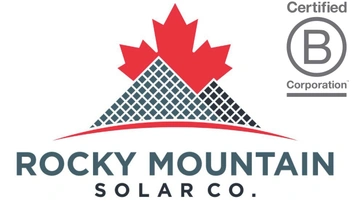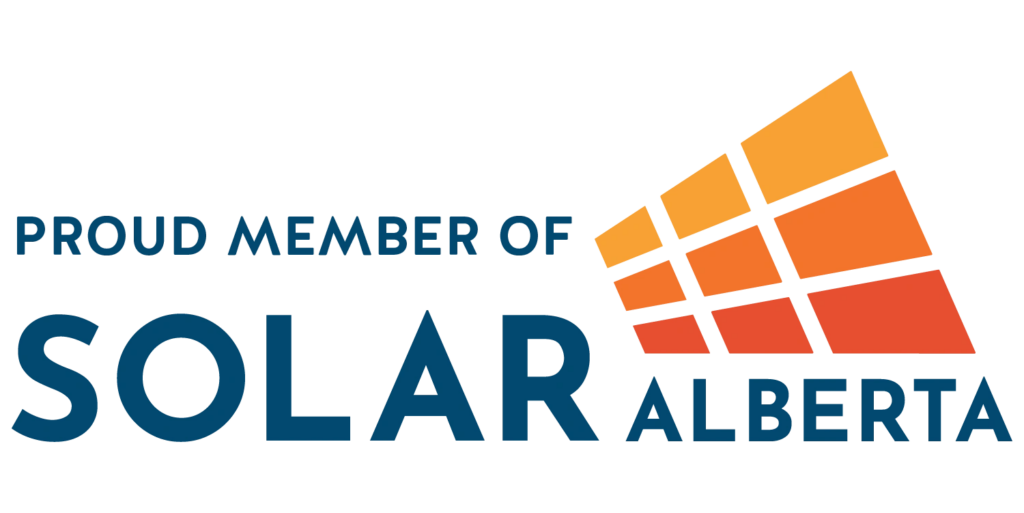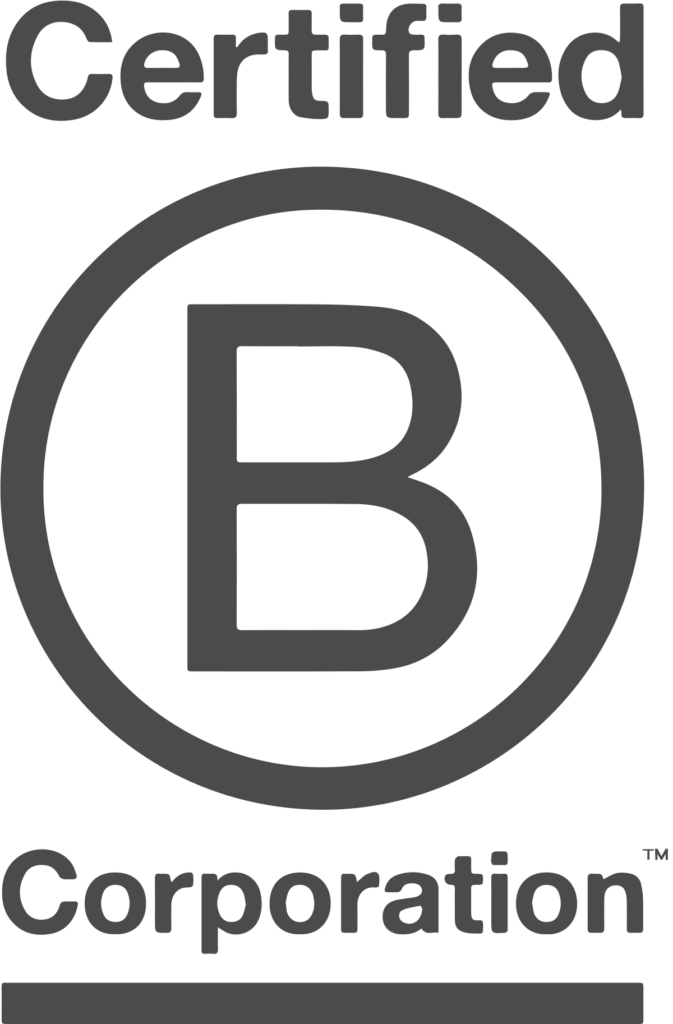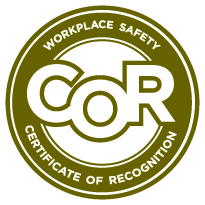Solar Tips & Tricks
Thinking about installing solar for your home or business?
Here are some tips & tricks to help your search for the right solar contractor:
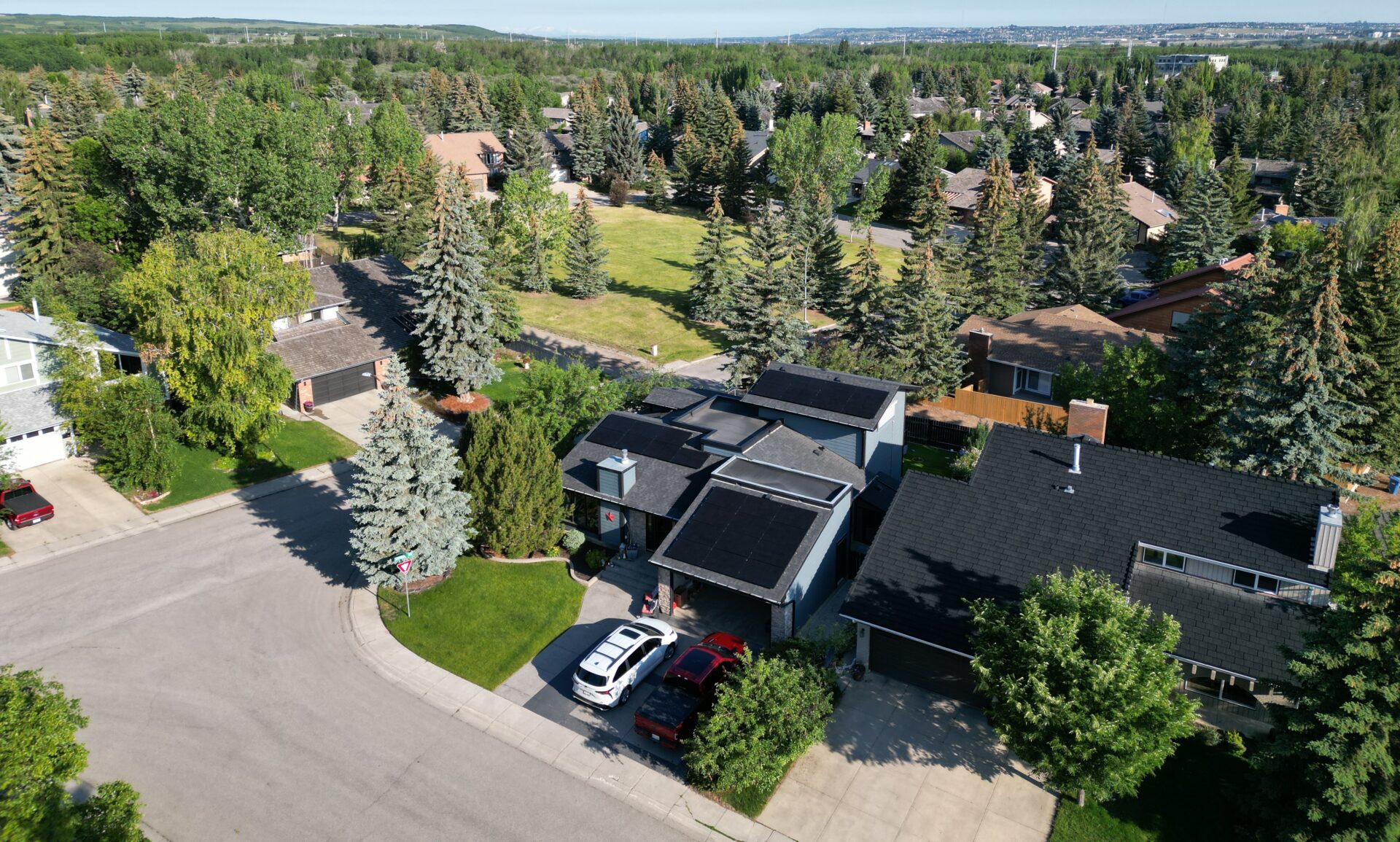

Get Multiple Quotations
Speak to at least 3 different solar companies to ensure you are getting the proper system for your home or office. Every design is unique, and an efficient design requires the appropriate tools, software, and knowledge. Use the sourcing process as a learning experience for yourself; the more proposals you review, the more knowledgeable you will become.

Sales Tactics
Rocky Mountain Solar Co. does not engage in door-to-door sales or other high pressure sales tactics. Be aware of companies that do, and ensure you properly vet their organization if you plan to select them as your contractor. The Governments of Canada and Alberta have some fantastic programs available for businesses and homeowners, but they have also increased the number of organizations looking to take advantage of home and business owners.

Payment Terms
In most cases we will not ask for a deposit until we are approximately one week from your installation date. Be leery of any contractor who is asking for a significant deposit many weeks, or months, in advance.

Cost Per Watt
When comparing quotes, it is always helpful to look at the “Price Per Watt” For example:
Quote 1) $15,000 total price, system size 5kW (5,000w), Price Per Watt = $3.00/watt
Quote 2) $20,000 total price, system size 8kW (8,000w), Price Per Watt = $2.50/watt
Despite being $5,000 more than Quote 1, Quote 2 is significantly less expensive on a $/watt basis. This does not mean you should automatically select Quote 2 (there are many factors to consider), however, cost per watt is the best way to compare the value of different solar proposals.

Ask About Racking
Customers are mostly concerned about the solar equipment (solar modules, inverters, etc.) and, because of this, racking often gets overlooked. The truth is, you are more likely to have an issue with your roof after your install than the actual solar equipment. Rocky Mountain Solar Co. is the only solar installer with on-staff roofing professionals, and we only use the most robust racking systems available.
When other solar contractors are looking to cut costs, racking is usually the first place they look. Ask them why they selected the racking they are proposing: “Everyone uses the same racking” is not an appropriate answer.

Third-Party Contractors
All of our installers are full-time employees of Rocky Mountain Solar Co. They are fully-trained, are paid Living Wages, and receive a benefits package. We take pride in our work knowing, if we make a mistake, it is our responsibility to make it right.
Using third-party contractors can pose challenges such as:
- Quality control issues.
- Communication difficulties.
- Dependency and risk of project failure.
- Potential hidden costs.
- Less control over work and outcomes.
- Lower accountability and responsibility.

Total Solar Resource Fraction
Calculating the Solar Resource of your roof is extremely important. The first number to look at is the Annual TOF; this is the Tilt Orientation Factor. TOF measures how much sun your roof will get based on its tilt/slope and orientation. TOF is expressed as a percentage of a roof with ideal tilt and orientation.
The next thing to look at is Solar Access. This is the shading factor that the roof faces from nearby trees, buildings, mountains etc.
When you combine the TOF and Solar Access, you get the Total Solar Resource Fraction (TSRF). Our designers use your TSRF to identify the optimal surfaces for placing panels on your roof. Generally, surfaces with a low TSRF are not ideal for solar installations. These typically include north-facing areas or surfaces that are heavily shaded by tall trees or buildings.

Beware of Financing
Beware of any providers that offer financing. Financing can be extremely helpful, but it should be provided by a third-party (government entity, financial institution, etc.), not your solar contractor. The Canada Greener Homes Grant is a 10-Year program offering 0% interest. There is no reason to use any other financing product for your solar energy system.

System Losses
Ask your contractor how much they are considering for losses. Losses can occur from things like snow, dirt/dust, wire/connection losses, and system availability. The question is: How much loss should be considered? In Alberta, it is safe to assume that this value should be between 10% & 15%. Ask your contractor what they have considered, and why.

Roofing
Your roof should be in good condition prior to installing solar; our roofing experts will help evaluate the condition of your existing roof. If you need a new roof, or repairs prior to your solar project, we have amazing contacts and partners who can help you out.
The areas of your roof that are under the solar panels will be well protected from the elements, and it is often the other areas without solar that will need replacement first. At this time you will be left with 2 options:
Option 1: Replace/upgrade sections without solar only.
Option 2: Replace/upgrade entire roof.
For Option 2, a qualified solar contractor should be contacted to properly remove/decommission the system prior to your new roof being installed, and reinstall/commission the system after the roof is complete.
Solar FAQs
Rules regarding system size are explicitly regulated by the AUC (Alberta Utilities Commission):
- Microgeneration (MG) regulation states that a solar system shall be sized to meet the electrical needs of the site (100%).
- When sizing their system, customers should look at previous year’s consumption and use that amount for target production (in kWh).
- Increasing your target production is acceptable when new major electrical equipment is installed and the owner provides proof of installation and ownership.
- If the equipment is not in your possession and connected to your service, it should not be considered for increasing target production.
For more information you can visit the AUC site here: https://www.auc.ab.ca/
At the end of their 30-40 year useful service life, solar modules will inevitably need to be recycled. Thankfully, solar modules are highly recyclable. A typical silicon-based solar module comprises glass (76%), plastic (10%), aluminum (8%), silicon (5%), and other metals (1%). Of these materials, up to 96% can be reused to make new solar modules. This includes 95% of the glass, 100% of the aluminum, and 85% of the silicon. On top of all this, because you already have all the infrastructure in place (wiring, racking, and electrical capabilities), a new system can be installed at a fraction of the cost of similar sized systems built from scratch.
Find out more about solar panels recycling HERE
Whether you need critter guards for your solar array depends on several factors:
- Local Wildlife: If you live in an area with a high population of critters such as birds, squirrels, or rodents, they may be more likely to nest or cause damage to your solar arrays.
- Previous Incidents: If you’ve experienced critter-related issues with your solar array in the past, such as nests, chewed wiring, or other damage, it may be worth considering installing critter guards to prevent future incidents.
- Cost vs. Benefit: Critter guards can add to the overall cost of your solar installation. You’ll need to weigh the potential benefits of preventing critter damage against the additional expense. Repairs can be very expensive, and issues caused by birds/squirrels/critter rodents are not covered under warranty.
Critter guards, such as mesh screens or barriers, can help prevent critters from accessing the space beneath your solar panels, reducing the risk of damage to wiring, nesting, or other issues. It is not necessary, but highly recommended by Rocky Mountain Solar Co. as issues caused by critters/rodents are not covered in by any of our warranties.
The Solar Club Loyalty Program is designed specifically for micro-generators. It allows customers to earn a premium on their solar electricity and help further green Alberta’s electricity grid. It is available with all UtilityNet retailers in Alberta. Enmax also offers there own version of the solar club with their Easymax Seasonal Solar program.
The Solar Club allows you to change electricity rates throughout the year. During the months you export more electricity than you import, you will select a high export rate to maximize your returns. This is especially beneficial in Alberta as the majority of our annual production is in the 4 summer months.
At the time of year where you begin to import more than you export, you are able to switch your rate back to the low seasonal Solar Club rate.
For more information you can visit:
UtilityNet https://www.utilitynet.ca/solarrate.html
Enmax https://www1.enmax.com/solar/easymax-seasonal-solar
Solar arrays themselves do not inherently pose a significant fire risk when installed and maintained correctly. When installed by certified professionals and according to safety standards, the risk is minimal.
Regular maintenance, adherence to building codes and safety standards, and proper training for emergency responders can further reduce any potential risks associated with solar energy systems.
Although battery storage systems are possible for most installations, 95% of our installations are grid-tied solar arrays without any batteries. The unique billing system of the deregulated Alberta energy market makes it just as economical to sell our excess electricity back to the grid (vs. storing it in batteries). Therefore they generally will not impact your savings enough to justify the cost.
That being said, battery backup systems can be useful in areas where grid electricity has not been installed or it is unstable (remote locations). The security of having backup power is also something many customers are looking for. Also, if you have a EV, you may want to consider backup batteries to ensure you are always able to charge your vehicle.
As the general population continues to electrify, battery backup systems will become more attractive. Storage systems will also become very economically viable if Alberta decides to impose any sort of peak demand billing system.
When the power goes out in a grid-tied solar system without battery backup, the system typically shuts down as a safety measure. Here’s what happens:
- Inverter Shutdown: In a grid-tied solar system, power inverters are responsible for converting the direct current (DC) electricity generated by the solar panels into alternating current (AC) electricity used by household appliances and the grid. These inverters are designed to synchronize with the grid’s frequency and voltage. When the grid power goes out, the inverters sense the loss of grid connection and shut down to prevent back feeding electricity into the grid, which could endanger utility workers trying to restore power.
- System Inactivity: Since the inverters shut down, the solar panels stop producing electricity. This means that even though the sun may still be shining, the solar system cannot supply power to the home or building during a grid outage.
- No Backup Power: Without battery backup, the home or building connected to the grid-tied solar system will not have access to electricity during the outage. Appliances and lights will not function until grid power is restored.
- Safety Measures: Shutting down during a grid outage is a safety feature to prevent accidents and ensure that the system does not pose a risk to utility workers repairing the grid. However, it also means that solar system owners do not have backup power available unless they have additional measures such as battery storage or a backup generator.
In summary, when the power goes out in a grid-tied solar system without battery backup, the system shuts down, and the home or building it powers will be without electricity until grid power is restored.
Clipping in a solar photovoltaic (PV) system occurs when the DC power generated by the solar panels exceeds the maximum capacity of the inverter to convert it into usable AC power. While a small amount of clipping is generally considered acceptable and may occur occasionally in well-designed systems, excessive clipping can lead to energy losses and reduced overall system efficiency.
Here are some considerations regarding clipping in solar PV systems:
- Frequency and duration: Occasional clipping during periods of exceptionally high solar irradiance, such as on clear, sunny days, is generally acceptable. However, if clipping occurs frequently or for extended periods, it may indicate that the DC to AC ratio of the system is too high, leading to inefficient operation.
- Impact on energy yield: Clipping results in the loss of potential energy production during those periods when the inverter cannot convert all the DC power generated by the solar panels into usable AC power. The impact of clipping on energy yield depends on factors such as system design, geographical location, solar panel orientation, and shading.
- Inverter efficiency: Newer inverters often have improved efficiency and wider operating ranges, which can help reduce the occurrence and impact of clipping. Choosing an inverter with a higher maximum power point (MPP) voltage and wider voltage range can mitigate clipping to some extent.
- System optimization: Proper system design, including selecting the appropriate DC to AC ratio, sizing the inverter correctly, and optimizing the tilt and orientation of solar panels, can help minimize clipping and maximize energy harvest.
- Cost considerations: While reducing clipping is desirable to maximize energy production, excessively increasing the DC to AC ratio to eliminate all clipping may not be cost-effective. The additional investment in extra solar panels and a larger inverter may not always justify the marginal increase in energy yield.
In summary, while clipping is generally considered acceptable in solar PV systems to some extent, minimizing it through proper system design and component selection is essential to optimize energy production and maximize the return on investment. Balancing the cost of additional components with the benefits of reduced clipping is crucial in determining the most suitable design for a specific project.
The DC to AC ratio of your system is very important. Simply put the DC to AC ratio is the total system size of the modules vs. capacity of the inverter. When making this decision we need to consider cost of equipment (higher powered or more inverters will increase cost) vs. the amount of production we can expect from the modules. In most cases it’s appropriate for the AC size of your system to be less than your DC size for a few different reasons. Rule of thumb is you want your DC to AC ratio to be about 1.2 to 1.3, and there are a few reasons why:
#1 – Production of the Modules
The first is the production of the modules themselves. Out of the box, the modules run at ~98% efficiency. Year over year they degrade at a 0.4% rate, however, these are not the only losses we need to consider when properly designing a system. Keep in mind we are always trying to maximize production, but at any given time, there are several “losses” occurring during the day; here are most important variable we consider:
- Tilt – this is the largest factor; modules are flush mount at the tilt of your roof, and not at the optimal angle for production.
- Incidence angle/orientation – the direction at which the sun is hitting your panels.
- Dirt/dust/debris (depending on severity can be up to 2-3%).
- Year over year degradation (as mentioned previously).
- Temperature – the warmer it is, the more inefficient electricity is.
- Wiring/connections losses.
#2 – Clipping
Due to the loss factors mentioned, it is safe to assume the instances where your modules are going to be producing near 100% of their rated capacity are non-existent. Therefore, it is not necessary to have an inverter capable of producing near the panels rated valued. That being said, there may be times when your modules produce more electricity than your inverter can tolerate. During these times you may lose some production; this is called “clipping”. Clipping is common with solar, and the inverters are designed to manage it.
#3 – Cost of Equipment
Adding more or higher-powered inverters to your system will have substantial cost implications. In most cases this extra cost cannot be justified, as the production gains will not be substantial enough to justify the extra money.
#4 – Microgen Approval
The other important factor we need to consider is your Microgen application with your line provider. The line providers approve your system based on the AC size of the system, not the size of your panels (DC size). Because they will approve based on AC size, we do not want to select an inverter with excess capacity.
The appropriate DC to AC ratio for a solar photovoltaic (PV) system depends on several factors including the type of solar panels used, the inverter efficiency, shading conditions, temperature variations, and the desired system performance. However, a common rule of thumb is to aim for a DC to AC ratio between 1.2 to 1.5. This means that the DC capacity (in kW or MW) of the solar panels should be 1.2 to 1.5 times the AC capacity (in kW or MW) of the inverter.
Having a slightly higher DC capacity than the inverter’s AC capacity allows for better energy capture during periods of peak sunlight and reduces the risk of clipping (when the inverter cannot convert all the DC power generated by the panels into usable AC power). However, excessively high DC to AC ratios can lead to inefficiencies and increased costs without significant benefits.
Our team determines the most appropriate DC to AC ratio for a specific project, considering site-specific conditions and requirements. Additionally, advancements in inverter technology and system design may influence the optimal DC to AC ratio, so we are constantly staying updated with industry best practices.
RMSC currently provides solar module recycling services through one of our strategic partners. Please contact us directly if you have any modules that need recycling.
Solar is not perfect, and we understand that greenhouse gasses (GHGs) are produced during the manufacturing and transportation of solar equipment. However, when compared with other forms of electricity generation (coal, natural gas) solar is vastly superior.
Let’s compare CO2 emissions per kWh produced of these 3 electricity generators:
- Solar = 50g CO2/kWh
- Natural Gas = 500g CO2/kWh
- Coal = 1,000g CO2/kWh
As you can see, solar is 10 times more efficient than natural gas, and 20 times more efficient than coal. A solar module will pay back the GHGs created during its production & transportation in about 2 years of service. So although it is not perfect, solar is a massive step in the right direction.
The short answer is no, but whether or not you need to clean the solar panels on your house depends on several factors:
#1 Location: If your home is in an area with high levels of dust, pollen, bird droppings, or other debris, it may be necessary to clean your solar panels more frequently to maintain optimal performance.
#2 Weather Conditions: Rain can naturally wash away some dirt and debris from solar panels, but if you live in a dry or dusty area where rain is infrequent, you may need to have your panels cleaned more often.
#3 Tilt Angle and Orientation: The tilt angle and orientation of your solar panels can affect how much dirt and debris accumulate on them. Panels installed at a steep angle or in a location that receives a lot of wind may stay cleaner than panels installed at a shallow angle or in a sheltered area.
#4 Loss of Efficiency: Dust, dirt, or shading from debris can reduce the efficiency of your solar panels by blocking sunlight from reaching the photovoltaic cells. Cleaning your panels can help maintain their performance and ensure you’re getting the maximum energy output.
In general, it’s a good idea to visually inspect your solar panels periodically to check for any buildup of dirt, debris, or shading. If you notice a significant decrease in energy production or see visible dirt or debris on the panels, it may be time to clean them. However, proper safety precautions and manufacturer recommendations must be followed when cleaning your solar panels to avoid damaging the system. This is why we recommend you call us if you ever suspect your panels may benefit from a cleaning. It is important to note that we do include annual losses from dirt, dust, and debris (2-3%) in our production simulations.
Hail damage is a common concern for solar users. There is no denying that solar panels can be damaged by hail (particularly during some of Alberta’s worst storms), however, it is highly unlikely. Modules are manufactured using a tempered glass layer, and come with a minimum direct impact rating of 1” hailstone travelling at 80km/hr. Take a look at this video showing a 2.5” ice ball striking a panel at over 120 km/hr.
Thankfully there are insurance options to protect yourself against potential risks such as hail, and the premiums are extremely low.
Each inverter manufacturer provides their own monitoring platform and we will set this up for you at no extra cost. In most cases, the platforms will have both app & browser based portals. If you need assistance navigating your app or portal, or if you need help logging in, please contact your Project Manager.
*Please note a stable internet connection (Wi-Fi or ethernet) is required to monitor the solar production.
A legitimate concern when considering the purchase of ANY technology is that a new, better version is right around the corner.
Does the same hold true for solar panels?
Let’s start with the similarities. Similar to other technologies, new and improved solar products are being released each year. Instead of processing power, new solar panels have incremental improvements to their efficiency of converting sunlight into electricity. For example, let’s look at the most commonly sold solar panel technology today: mono-crystalline silicon. According to the National Renewable Energy Laboratory (NREL), the maximum efficiency of this technology has increased from 14% in 1977, to 26% in 2018. That’s an average of roughly 0.3% per year.
Some technologies are so rapidly eclipsed by advancement that they are rendered useless well before the end of their useful life. This is because, not only is the technology advancing, but the requirements of that technology are advancing too (i.e. software).
In stark contrast, what we want from solar panels (electricity) is not changing. The amount we need and what we use it for may change, but a kWh is identical no matter what produced it. There is zero difference between a kWh of energy from a 30-year-old solar panel, and a brand new one. As long as electricity is useful, and the sun keeps shining, a solar panel will never become obsolete.
Think of solar panels like a chair. A chair has one basic function: for you to sit on it. There are advancements in chair technology each year, but our requirement of them stays the same. Even an ancient chair still performs its intended function. The same can be said for solar panels.
Ensuring your solar energy system is not strictly required, but is a good idea. Although events requiring claims for damaged solar panels are extremely rare, they can happen. Many insurance companies in Canada offer straightforward insurance coverages and low rates to insure your solar energy system. It’s simply a matter of adding the value of the installed hardware to the value of your home or business property as insurance policies deem anything that constitutes a ‘permanent fixture’ as insurable.
As an example, we installed a system in Calgary with equipment valued at $71,000; our customers added it to their insurance policy and their premium increased by approximately $100/year. Most residential systems can be insured for $2-3 per month. As mentioned before, some insurance providers will add solar modules to your insurance policy at no additional cost.
Solar panels, also known as photovoltaic (PV) panels, are typically made of several layers of materials designed to capture sunlight and convert it into electricity. The main components of a solar panel include:
#1 Solar Cells: The core component responsible for converting sunlight into electricity. Solar cells are typically made of silicon, which is a semiconductor material. There are different types of solar cells, including monocrystalline, polycrystalline, and thin-film, each with its own manufacturing process and efficiency.
#2 Encapsulation Materials: Solar cells are encapsulated between layers of protective materials such as glass, plastic, or other transparent materials. These materials protect the solar cells from damage and weathering while allowing sunlight to pass through.
#3 Backsheet: The backsheet is a layer on the backside of the solar panel that provides additional protection against moisture and mechanical damage. It is usually made of polymer materials such as polyester or fluoropolymer.
#4 Frame: Most solar panels have a metal frame around the edges, which provides structural support and rigidity to the panel. The frame is typically made of aluminum or stainless steel.
#5 Junction Box: This box is located on the back of the solar panel and contains electrical connections that allow the solar panel to be connected to other panels and to the electrical system of a building or device. It also includes bypass diodes to prevent damage from shading or mismatched cells.
Overall, solar panels are engineered to be durable, efficient, and long-lasting, with materials chosen to withstand outdoor conditions and maximize energy production over their lifespan.
Solar energy systems operate more like a lightbulb than an engine. There are no moving parts to wear out and no filters or oil to change. Components will eventually wear out, and in rare cases have a defect, but no regular upkeep or maintenance is required for these systems to work as intended.
This means that home/business owners do not require any special training or in-house expertise to operate their solar energy system safely and efficiently. In some cases, occasional removal of tree leaves or other debris is required, however snow removal is not expected (see below). If a component is defective, it is easily detected, and you can count on Rocky Mountain Solar Co. to handle your warranty replacement.
Depending on the geographic location and tilt angle of your solar panels, they may become covered in snow for extended periods of time during the winter. Although sunlight will penetrate a thin layer of snow, anything more than a couple of inches will prevent most potential energy production. This is not cause for concern, however, as demonstrated by a recognized study at the Northern Alberta Institute for Technology (NAIT).
This study placed two sets of solar panels on the roof of an Edmonton campus building at various tilt angles. One set of panels were constantly maintained with snow removal, while the second was left untouched. After gathering 5 years of data, the study concluded that annual energy loss due to snow was between 3-6%.
But how could this be? Some of the panels were covered in snow for multiple weeks or even months!
The answer lies with how and when solar panels produce energy. First, the power from the sun is most intense when it hits at a perpendicular (90 degree) angle. Solar panels, therefore, will produce the most power when sunlight is aimed directly at them. Secondly, the duration of sun exposure will dictate the amount of energy received. The outcome of these two factors means the energy produced by solar panels is maximized when days are long, and the sun is in a high position in the sky (summer).
Alternatively, energy production is minimized when days are short, and the sun is in a low position (winter). Thankfully, this period of minimum energy production is also when snowfall occurs. The result, confirmed by the NAIT data, is that snow coverage affects the already low periods of energy production. In other words, snow coverage takes a big bite out of the smallest slice of the energy pie.
(Note: While minimal, snow losses are explicitly incorporated in our analysis and design.)
Solar panels come with two different warranties: product warranty and power production warranty. The product warranty on solar modules ranges from 10-15 years and covers the integrity of the panel and its construction. This protects you against manufacturing defects, environmental issues, and premature wear and tear.
Additionally, modules come with a 25–30 year power production warranty. This protects you against faster than expected degradation of the panel’s energy output. Although warranties vary, typical power production warranties state that the power output by year 25 shall be no less than 80% of its rated value. This is applied linearly, promising no greater than 0.8% loss per year.
Sophisticated monitoring software makes spotting defects or issues very easy. If you encounter a component failure, simply contact Rocky Mountain Solar Co, and we will complete the warranty replacement at no charge. Even if your warranty has expired, we will continue to support you.
Please reach out to our team if you would like additional information.
